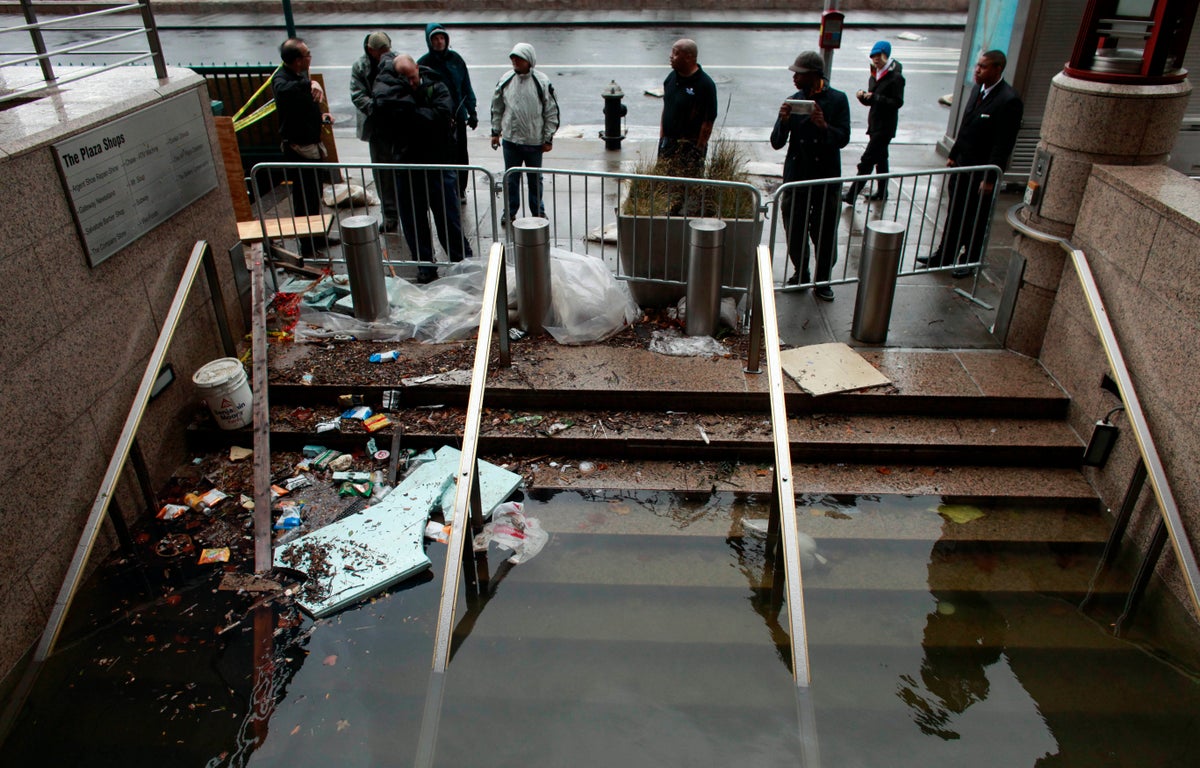
Several parts of New York appear to be sinking at the rate of one to two millimetres per year under the weight of countless skyscrapers, a new study warned.
Parts of the Big Apple, including Brooklyn, Queens and Lower Manhattan, seem to be sinking due to a geological process called subsidence in which sediments shift and settle, said the research, published recently in the journal Earth’s Future.
The contribution to subsidence from the pressure exerted by the built environment of NYC, which is home to over 8.8 million people, was estimated in the study by researchers, including Tom Parsons from US Geological Survey (USGS).
The estimation was arrived at by considering soil conditions and the load of over 1 million buildings - weighing a cumulative 1.68 trillion pounds. The study also pointed out that it was not possible to ascertain the exact foundation circumstances for each building.
The study also warned of an increasing flood risk in the populous city.
Previous studies have shown that the rapid rise in sea levels across the world due to global heating is set to pose major flood risks to coastal cities. Research predicts there could be an increase in sea levels by 200-600mm by 2050 worldwide.
Scientists have also found that the people living in subsiding cities across the world are set to face rising seas at rates up to four times faster than in other more stable regions.
They found NYC is undergoing a mean subsidence of about 1-2mm/year across the city with “some areas of significantly greater subsidence rates”.
At least some of the deformation undergone by the sediments under the city are “exacerbated by recent building loads”, researchers said.
However, they said there could also be many other possible causes, such as groundwater withdrawal, natural ground compaction, tectonic effects and rerouting of normal sediment accumulation.
The sinking observed in New York is emblematic of the risk faced by growing coastal cities all over the world that have been found to be subsiding, scientists said.
Buildings in the city also face other risks such as exposure of their foundations to salt water that can corrode reinforcing steel and chemically weaken concrete.
“Cumulative pressure applied to the ground from large buildings contributes to subsidence not only from initial primary settlement caused by soil compression and reduction of void space, but also through potential secondary settlement caused by creep in clay rich layers that can continue indefinitely,” researchers wrote.
The issue may have been exacerbated as populations have continued to grow in the city, they theorised.
“Major cities around the world are expected to grow disproportionately relative to rural areas, with a projected 70 per cent of the world’s population living in cities by 2050,” they wrote.
Researchers warned of growing flood hazards in coastal cities as increasing urbanisation will likely aggravate subsidence further.
“As these trends continue it will be important to be mindful of accompanying mitigation strategies against inundation in growing coastal cities,” they concluded.







